What Are the Stages of App Development?
From an idea to a successful launch… There are 4 main stages of building an app. Learn more about all of software development steps.
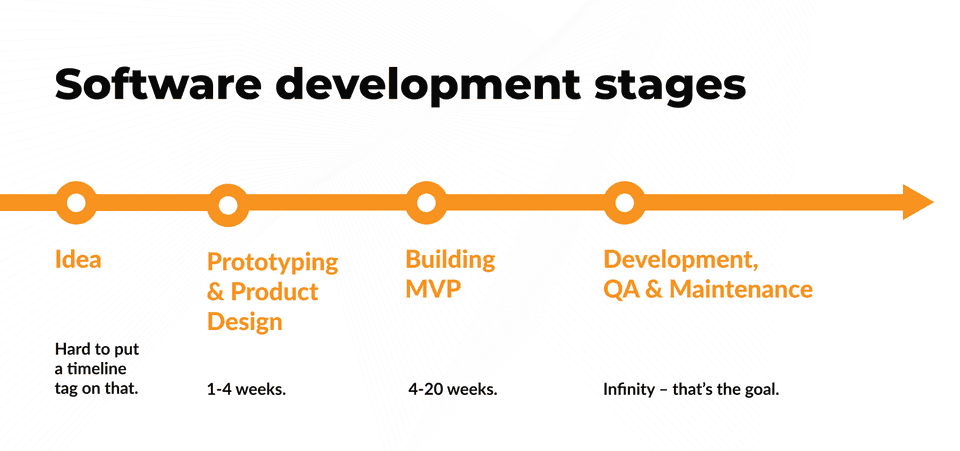
Web or mobile app development steps and timelines
Check out all the steps on the road to a successful app launch and maintenance.
App Idea
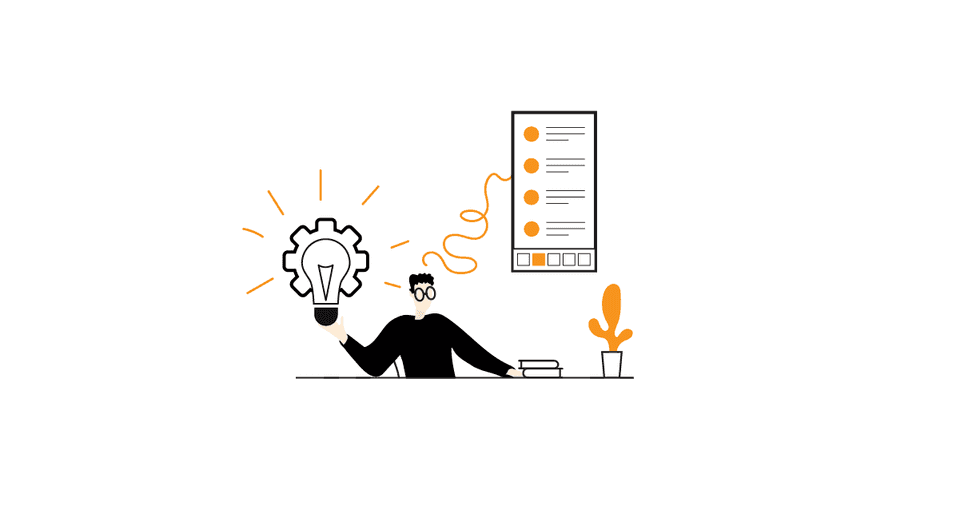
- Even the most unique idea doesn’t guarantee success. This is only the beginning.
- This phase helps quickly verify if the idea has some business potential. For example, creating another weather app may not be a profitable option.
- Also, during this stage, you can start looking for a suitable software development company.
- Software development companies often conduct product workshops with the client to discuss the idea and its potential.
- This stage helps to answer another big question – how much would my app cost? If the idea is too expensive to develop, you can modify it or even just give up on it.
- This is a great moment to establish first goals that will help you to measure in the future if your app is a success. However, these goals might change. While you are getting to know the industry, you might better understand what you need to succeed.
- Ideation is a significant time for product designers. During workshops with the client, designers can better understand the whole solution. This brings us to the Prototyping phase.
App Prototyping & Product design
(1-4 weeks)
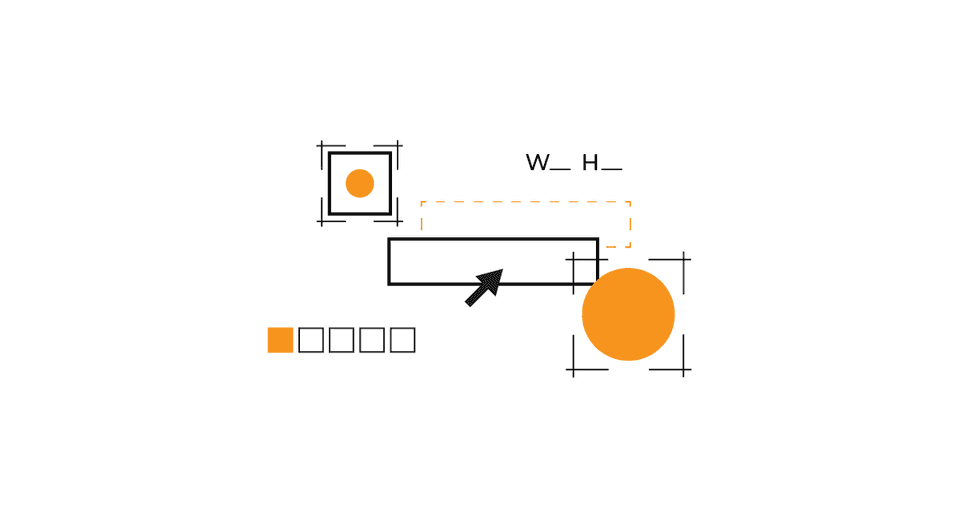
-
The stage when a product designer creates the first visual representation of the idea.
-
Prototyping phase contains 3 stages: wireframes, mockups, prototypes.
-
Wireframes are very simple designs (even drawn on a piece of paper) that show the basic application flow. They are just a structure – a backbone of the product that may not be contextually full.
-
There are two types of wireframes:
- Low fidelity wireframes – help understand the structure of the product/service and make sure the client and the team are on the same page.
- High fidelity wireframes – help understand the structure and feel of the product/service. They can be presented to stakeholders and first user testers.
-
Then come mockups that derive from high fidelity wireframes. Mockups ensure the client that all requirements are met. Also, provide developers with all the info about UI elements.
-
After the mockups stage, it’s finally time for prototypes. They are basic clickable mockups or wireframes without any backend. The product designer creates mockups especially to show testers how the solutions might work. This is the moment when the idea starts to be something present, something that we can click on and engage with.
-
This stage helps to eliminate other mistakes that we weren’t aware of till this point. During this phase we can even come to the conclusion that our app is too difficult for users or users would use it differently than was expected.
Building the MVP (Minimum Viable Product)
(4-20 weeks)
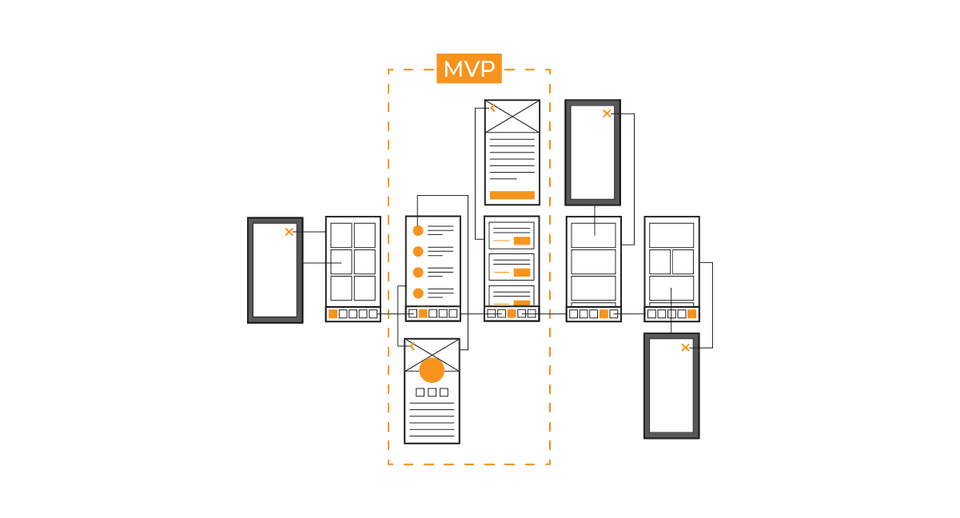
- According to the first feedback received during the prototyping stage, the software development agency creates the first version of the mobile app. MVP is the minimal version of the product/service including only crucial features.
- Developing crucial features helps to reduce time to market and prevent app owners from spending too much money on a product that hasn’t been verified by the market yet.
- MVP development works closely with the agile methodology.
- Business trends and technologies transform every day so developing MVPs helps quickly enter the market and easily adapt to any possible business or technical changes.
- MVP is also an opportunity to meet first technical challenges that could have been missed during prototyping phase such as: accessing geo location in the background or handling bluetooth communication with other devices.
- Even though MVP is a basic version of the product, it should be treated as a solid base for what’s next. Well done MVP will benefit in the near future during another development stage. MVP gives a chance to create a well-thought software solution, based on
our perception of users’ needsactual users’ needs and market trends.
Download the ultimate guide to MVP for free
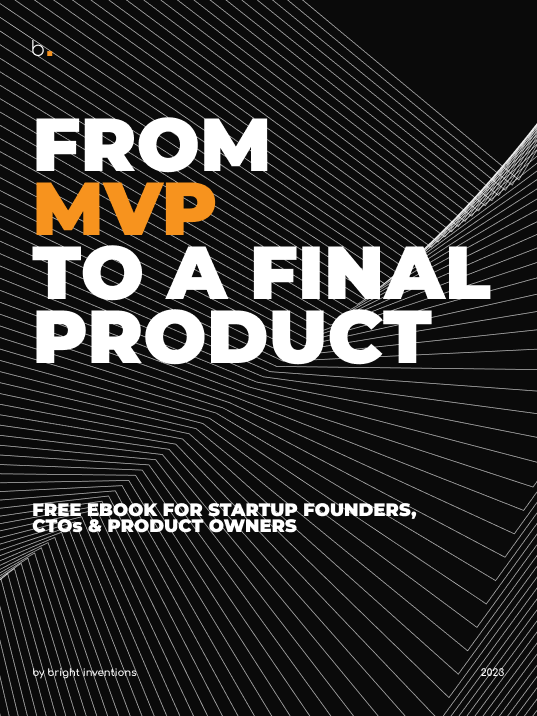
App Development, QA & Maintenance
(Infinity – usually)
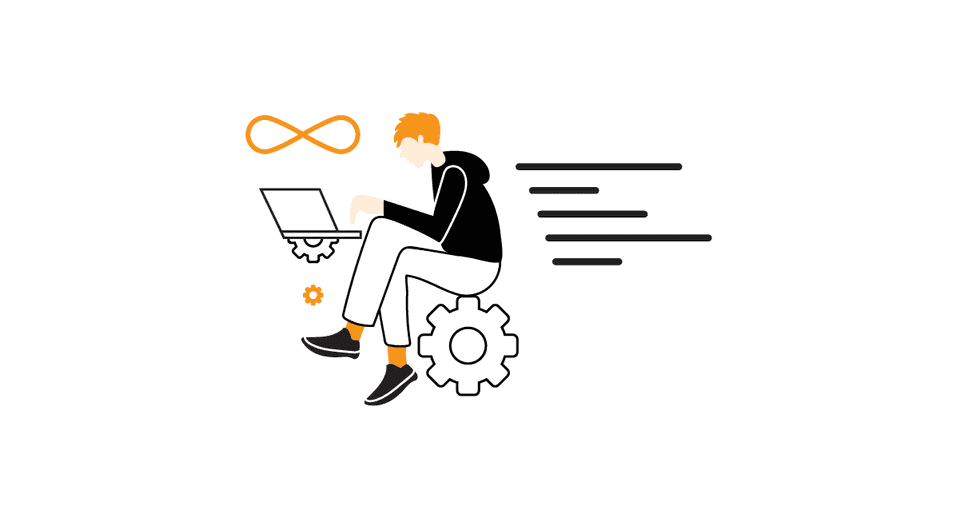
- Congrats, you’ve made it! 🙂
- At this stage, a software development company regularly deploys some new features to production.
- QA team makes sure that your software is secure, up-and-running and offers the best possible performance.
- Every change in the product will affect your users. Thus at this stage the priority for developers is to maintain the app stability. All development updates should be tested in a staging environment.
- The crucial part is to analyze users’ behavior to see how they respond to new features.
- Also, at this stage mobile app developers have to regularly update the apps to cope with the Android and iOS changes.
- It’s a constant challenge of developing our product to give more and more satisfaction to the users. :)
Now you know more about the most important app development stages. Remember that the final flow always depends on the project. Not every step is required. Nothing is set in stone in the app development world.


